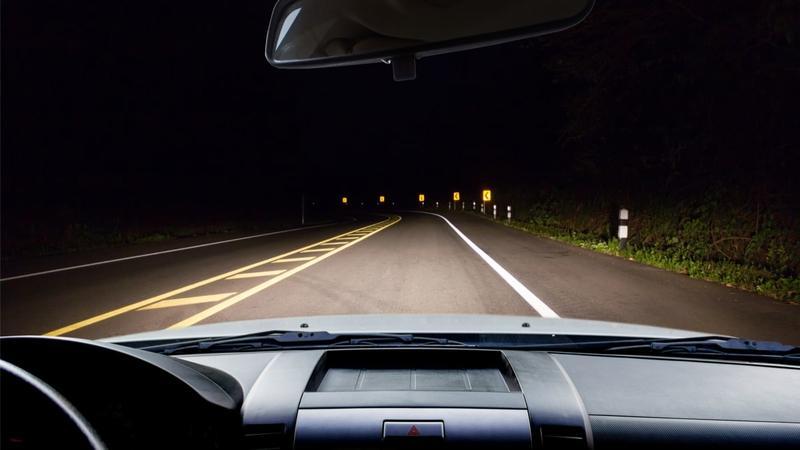It goes without saying that driving in the dark is considerably more difficult than driving during daylight hours; it’s simply harder to see what’s going on around you. And, now that the days are getting shorter, it’s time to shine a light on a few nighttime driving tips.
10 safety tips for night driving
Night driving can be challenging but there are a number of things you can do to ensure a safe drive home as we head into winter.
1. Install winter tires
Low light and wet weather conditions can make winter driving tricky, but tires designed specifically for the season may help. Winter tires provide your car with more traction and handle freezing temperatures better than all-seasons; they help you keep control of the car and stop effectively. Additionally, many car insurance companies offer a discount for using winter tires, so you can save on your premiums and stay safe on winter roads at the same time.
2. Clean your windshield and mirrors
Before heading out, make sure your windshield and mirrors are completely clear of any obstructions, whether it be dirt, frost, or snow. Also, make sure your car is fit for the drive and replace old wipers with new ones and carry extra wiper fluid in case you run out.
3. Do a walk around the car
Examine your vehicle to make sure your exterior lights — headlights, tail lights and signal lights — are working and if they're not, replace as soon as possible. Also, remove any dirt or debris that may have accumulated to ensure your vehicle's lights can be easily seen.
4. Drive sober, alert, and focused
Whether impaired by drugs or alcohol, fatigue or distractions, driving requires your full (sober) attention. If you’re impaired in any way, don’t get behind the wheel; if you’re tired, have a nap and, if you need to take a call or reply to a text, pull over.
5. Don’t overdrive your headlights
If you’re driving in a setting where you’re relying solely on your headlights for visibility, don’t overdrive your headlights. You should be able to safely stop within the distance that is illuminated.
According to Transport Canada, low beams generally allow you to see up to 60 metres down the road, yet it’s estimated that it takes about 76 metres to stop if travelling at a speed of 80 km/h. Drive according to the conditions which may require you to go slower.
6. Minimize the effects of glare from oncoming cars
The headlights of oncoming traffic can cause a glare making it difficult to see. Ontario’s Ministry of Transportation suggests that drivers "look up and beyond and slightly to the right" when faced with the bright lights of oncoming traffic.
7. Adjust your rearview mirror to cut down glare
Rearview mirrors typically have two settings; one for daytime driving and the other for nighttime driving. If the headlights of the vehicle behind you are causing a glare in your rearview mirror; turn the night setting on. If you’re not sure how to do this, pull over and pull out your owner’s manual.
8. Use high beams only when appropriate
High beams can help light the way, but can cause problems for other drivers if used inappropriately. If traffic is approaching or there’s a car ahead of you, you should switch to low beams to avoid blinding others.
Also, you likely won’t need to use your high beams if the roads are well lit by streetlights; they’re more commonly used on dark country roads. If you’re using your high beams in a rural area, switch to your low beams when you come to a curve or hilltop to avoid blinding other drivers who may be approaching.
9. Increase your following distance
Since visibility is reduced at night, give yourself more time to react to hazards on the road; double the two-second rule so you've got plenty of time to safely stop if needed.
10. Have a well-stocked roadside emergency kit
Drivers should always have an emergency roadside kit stored in their trunk that contains (among other things) jumper cables, a first aid kit, flashlight and batteries, and flares. Lighting aids will help you remain visible if your car were to breakdown on the road while driving at night.
Don’t let auto insurance premiums darken your mood. Compare auto insurance quotes today for a better price.
